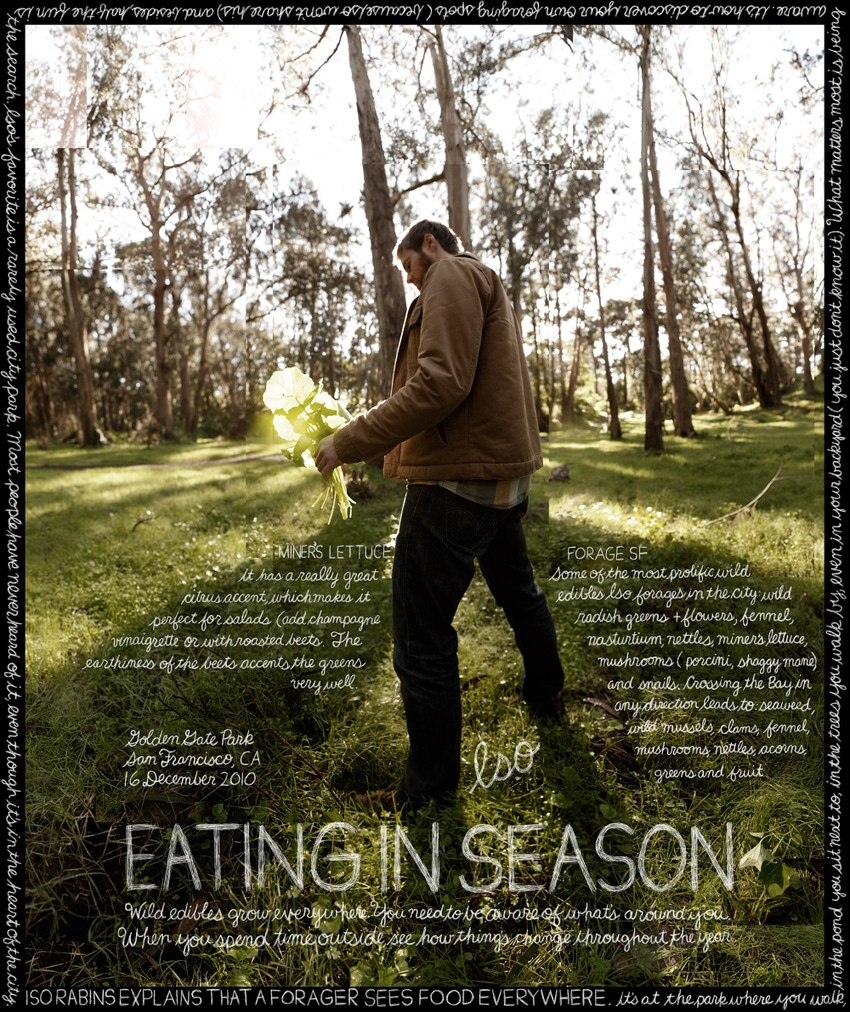Watchword: Eating in Season
To draw attention to the best and brightest ideas in sustainability, the Lexicon of Sustainability's Food List project defines the words that are integral to a healthy, transparent, and accountable food system. Each week, we explore a new word through artwork, films, recipes, and written works.See all Food List words here.
July 22, 2014

Eating in season is one of the most basic and powerful things you can do to support a healthier food system. Buying directly from a local producer reduces the energy costs that result from transporting food a great distance (called "food miles"), and supports the health of your local economy. Besides: local, in-season food simply tastes better than produce that is shipped thousands of miles and ripened in transit.
Consuming produce at the time of year when it grows naturally can also bring you closer to your local environment.


Image Title: Eating in Season
Location: San Francisco, CA
Featuring: Iso Rabins of Forage SF
Image Credit: Douglas Gayeton
Iso Rabins, pictured above, explains that a forager sees food everywhere. It's at the park where you walk, in the pond you sit next to, in the trees you walk by, even in your backyard (you just don't know it). What matters most is being aware.
Short film: "Locavore"
As consumers take increased responsibility for what they eat, many choose to become “locavores,” favoring foods grown or produced in their communities. By voting local with their pocketbooks when they go to the supermarket, these consumers keep money in local economies while supporting and strengthening local food systems.
Featured in this short film is Jessica Prentice, a chef and co-owner of Three Stone Hearth, who coined the term “locavore.”
Choose flavor-packed food close to home
Says Stephen Decator of Live Power Community Farm, "It is possible to eat a diet that's seasonal and to have quite a bit of variation. The fact that you don't get tomatoes in May just means that, when they do appear, they are really exciting. You can change your recipes, change your cooking, and enjoy the season and the qualities that come from that time of year."
"The 100-Mile Diet" is a common unit of measure used to denote the maximum distance food can travel and still remain local to the consumer. Check out localharvest.org and take Tucker's challenge to eat locally:

Recipe: Vegetable Fajitas by Chef Ann Cooper
Fajitas are incredibly versatile, making them a great meal choice almost any time of year. Swap out vegetables with what's in season, and add whatever type of protein you like to the marinade for variety.

How do you make an effort to eat locally and in season? Tell us in the comments below, and follow us for more on eating in season throughout the week.
For the past three years, the Lexicon of Sustainability has sought out the foremost practitioners of sustainability in food and farming to gain their insights and experiences on this important subject. What began as a photography project to spread their knowledge has grown to include short films, study guides, traveling shows, a book, and a website where people can add their own terms to this ever-evolving lexicon. See more at www.lexiconofsustainability.com.
About the Author(s)
You May Also Like





